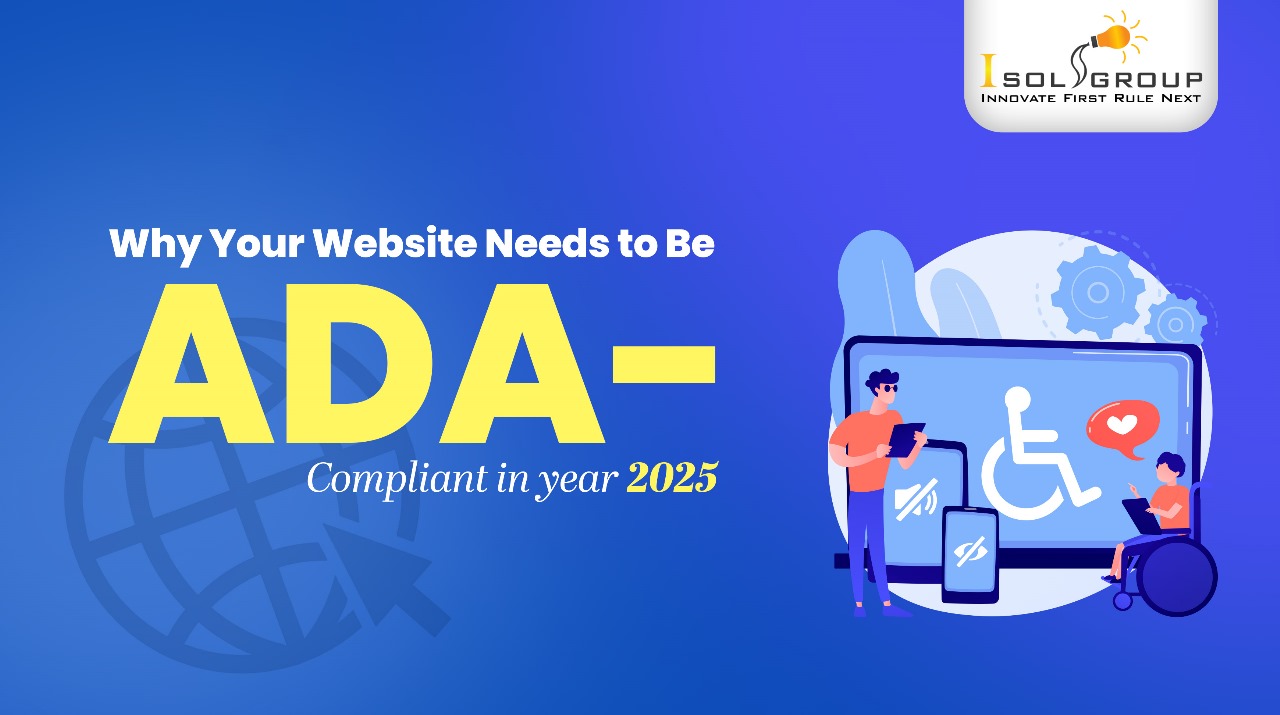Why Your Website Needs to Be ADA-Compliant in year 2025
Introduction
As the world relies more on systems and technologies, inclusivity is no longer optional. It has become a basic human right. The Americans with Disabilities Act (ADA) now extends protection to ensure people with disabilities can access websites and web applications. In simpler terms, achieving ADA compliance for your company by 2025 will go beyond a legal requirement. It will become an ethical obligation that also offers significant business benefits.
For Indian businesses though, by the year 2025, it will no longer be a question of meeting global business norms by having compliant websites but rather leading in the race towards a more inclusive digital world.
However, what are the benefits of having an ADA compliant website for you in India and how would it change your engagement as an organization with your targeted audience? Working with a web designing agency in Delhi will ease your satisfaction and process.
What is the meaning of ADA Compliance
ADA Compliance or in full, the Americans with Disabilities Act works by ensuring that website users who have any kind of disability can use the website with ease. Adherence to policies such as providing alt text for images climbing videos or using caption texts and other more features is what this entails. Broadly, ada compliance helps to utilize advanced technology while ensuring equal access to digital resources by all people, so inclusivity is improved.
With the development of more advanced technology, the standards will be even more stringent. For non-compliant websites, by 2025 using them will bring legal actions and will harm the image.
The Extent of ADA’s Influence Continues to Increase
The range of the ADA has not only been limited to buildings but has also espoused the internet. All websites and web applications are required to be designed and developed with the needs of the disabled population who are visually impaired as well as deaf, cognitively and physically impaired in mind. Thus designing websites that can be beneficial to all members of society in a fair way regardless of their technological and physical limitations.
Key Pillars of ADA Compliance
To ensure your website is ADA-compliant, consider the following key principles:
- Perceivable Information:
- Alternative Text: Provide meaningful alternative text for images and non-text content, enabling screen readers to convey visual information to users who are blind or visually impaired.
- Color Contrast: Ensure sufficient color contrast between text and background to enhance readability for users with visual impairments.
- Text Size: Allow users to adjust text size to their preference, accommodating users with varying visual abilities.
- Operable Interface:
- Keyboard Navigation: Design your website to be fully navigable using only a keyboard, bypassing the need for mouse clicks.
- Focus Indicators: Clearly indicate the current focus element on the page, helping users with visual impairments track their navigation.
- Time Limits: Avoid imposing arbitrary time limits on tasks, as this can hinder users with cognitive or motor impairments.
- Understandable Information:
- Readable Content: Use clear, concise language and avoid jargon or complex sentence structures.
- Logical Page Structure: Organize content in a logical and consistent manner, using headings and subheadings to improve readability.
- Predictable Behavior: Design intuitive and predictable user interfaces to minimize confusion and frustration.
- Robust Content:
- Compatibility with Assistive Technologies: Ensure your website works seamlessly with screen readers, magnifiers, and other assistive technologies.
- Responsive Design: Optimize your website for various devices and screen sizes to accommodate diverse user preferences and abilities.
The Benefits of ADA Compliance
Beyond legal compliance, ADA compliance offers a multitude of benefits for your business:
- Expanded Audience: By making your website accessible, you can reach a wider audience, including individuals with disabilities who may have been previously excluded.
- Enhanced Search Engine Optimization (SEO): Many SEO best practices align with ADA guidelines, such as using descriptive alt text and well-structured content.
- Improved User Experience: Accessible websites are easier to use for everyone, leading to increased user satisfaction, engagement, and loyalty.
- Positive Brand Reputation: Demonstrating a commitment to accessibility can enhance your brand’s reputation and attract customers who value inclusivity.
- Reduced Legal Risk: By proactively addressing ADA compliance, you can mitigate the risk of costly lawsuits and negative publicity.
By following these guidelines and working with accessibility experts such as a web designing agency in Delhi, you can reap the benefits and expand your business.
Steps to Make Your Website ADA-Compliant in 2025
If you’re wondering how to adapt your website to ADA standards, here are actionable steps:
- Conduct an Accessibility Audit: Use tools like WAVE or Lighthouse to identify accessibility gaps.
- Optimize for Screen Readers: Add descriptive alt text for images, and ensure all links and buttons have clear labels.
- Enable Keyboard Navigation: Ensure every interactive element can be accessed using a keyboard.
- Improve Visual Elements: Use high-contrast colors, scalable fonts, and readable layouts.
- Provide Multimedia Alternatives: Add captions for videos and transcripts for audio files.
- Test Your Site Regularly: Involve real users with disabilities for feedback on usability.
For a smoother transition, partnering with an accessibility focused web designing agency in India is highly recommended.
A Future of Interconnectivity
It is also imperative that as we progress, digital accessibility becomes a key consideration. The compliance with Americans with Disabilities Act (ADA) should make a rosy more inclusive digital space than what currently exists.
Conclusion
ADA compliance is almost a non-negotiable, it is an ethical obligation. Everyone must reasonably access the digital world. Working within the frameworks set by such experts is a good beginning but does not guarantee you a well-designed and compliant site. The principle is simple: a compliant website is one where everybody is able to use it.

Recent Comments